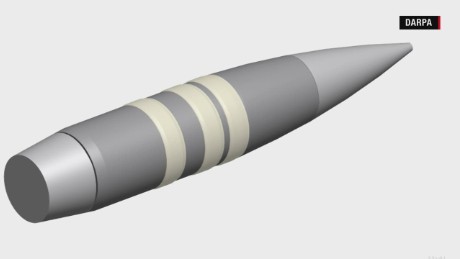Microsoft demonstrates new HoloLens prototype, talks up dedicated Holographic processor

Microsoft unveiled new prototypes and details of its HoloLens project this week, and the new technology looks like it could have a profound impact on how we use computers in the future. Like the Oculus Rift, the HoloLens system is headset-based, but that’s where the similarities end. Where Oculus Rift creates entire 3D realms to explore (virtual reality), HoloLens is meant to create holographic overlays over existing objects and structure in the real world (Augmented Reality).
Microsoft had previously showed off its HoloLens technology, but the January demos relied on bulky equipment. The new prototypes are, dare we say it, rather sleek. The fact that HoloLens is only meant to augment real-life rather than completely replace it means that there’s no need for a screen and face-covering VR headset.
Microsoft has been coy about the exact components inside the device, but the company’s blog claims that there’s no necessary markers, no external cameras, wires, no need for a phone, and no connected PC. Microsoft claims that the HoloLens contains significantly more processing power than your average laptop but doesn’t just rely on a standard CPU or GPU. The company claims to have invented a third piece of silicon — a “Holographic Processing Unit,” or HPU.” Details on what, exactly, the HPU is are scarce on the ground, but PCWorld reported earlier this year that the CPU and GPU are based on Intel’s Cherry Trail. This puts the claim that the platform packs more processing power than your average laptop into serious question.
According to Redmond, “The HPU gives HoloLens the real-time ability to understand where you’re looking, to understand your gestures, and to spatially map the world around you. Conceived, designed, and engineered by Microsoft, the HPU is designed specifically to support the needs of HoloLens.” It’s devoted to processing data from specific sensors inside the unit and can reportedly be used by developers to create amazing experiences “without having to work through complex physics calculations.”
The goals of HoloLens can be gleaned from the mockup images Microsoft has released. The company clearly envisions a day when complex software can stretch beyond the monitor and into real life, giving content creators, gamers, and even day-to-day users the option to manage aspects of their virtual lives or worlds in the real world.
The future of Azure
Microsoft has yet to clarify how it is that the HoloLens can function without connecting to a smartphone or PC, and this is a non-trivial detail. While device manufacturers continue to iterate on products and create better experiences, there’s basically no way Microsoft can pack a top-end, smartphone-class battery, SoC, and cellular or WiFi radio into a diminutive headset. The alternative to doing that, of course, is to shift workloads and processing into the cloud.
By pushing the AR workloads over to Azure, Microsoft’s cloud platform, the company can use lower-end hardware on the “client” side. You need enough hardware to handle local processing and rendering, but past that point you can shift storage and application interfaces over the cloud. Some of Microsoft’s mockups show people using HoloLens to interact with a PC while performing 3D modeling, but that doesn’t mean Azure isn’t handling the back-end connections.
When Microsoft launched the Xbox One, one of the capabilities it teased was the option to move back-end rendering to a cloud platform, thereby augmenting in-game graphics from a distance. We haven’t seen any title take advantage of this capability to date, but HoloLens could be part of what Microsoft was talking about. Some of you may remember Illumiroom— a light projection system that could be added to a console to enhance its visuals. HoloLens might represent an evolution of that concept — the ability to play a game on a TV, but see aspects of the title projected around the primary display. Autodesk has also pledged to support the product with its Spark3D open-source 3D printing platform.
After being burned on multiple Next Big Thing interfaces, however, we’re a bit cautious on Microsoft’s ability to pull this tech off. Kinect garnered a great deal of praise before launch, but ultimately failed to make much of a difference in how people used their Xbox’s. Even the much-touted Wiimote and PlayStation Move did little for the gaming market as a whole. VR systems like Oculus Rift have caught the attention of a certain segment of the gaming industry and press, but have not yet demonstrated broad consumer appeal. Even 3D glasses and content failed to catch on with consumers as a whole, suggesting that how we consume and interact with content is fairly entrenched.
The feedback from journalists who have spent time with HoloLens suggests that Microsoft has something potentially great on their hands — but whether the company can capitalize on it effectively is yet to be seen.






